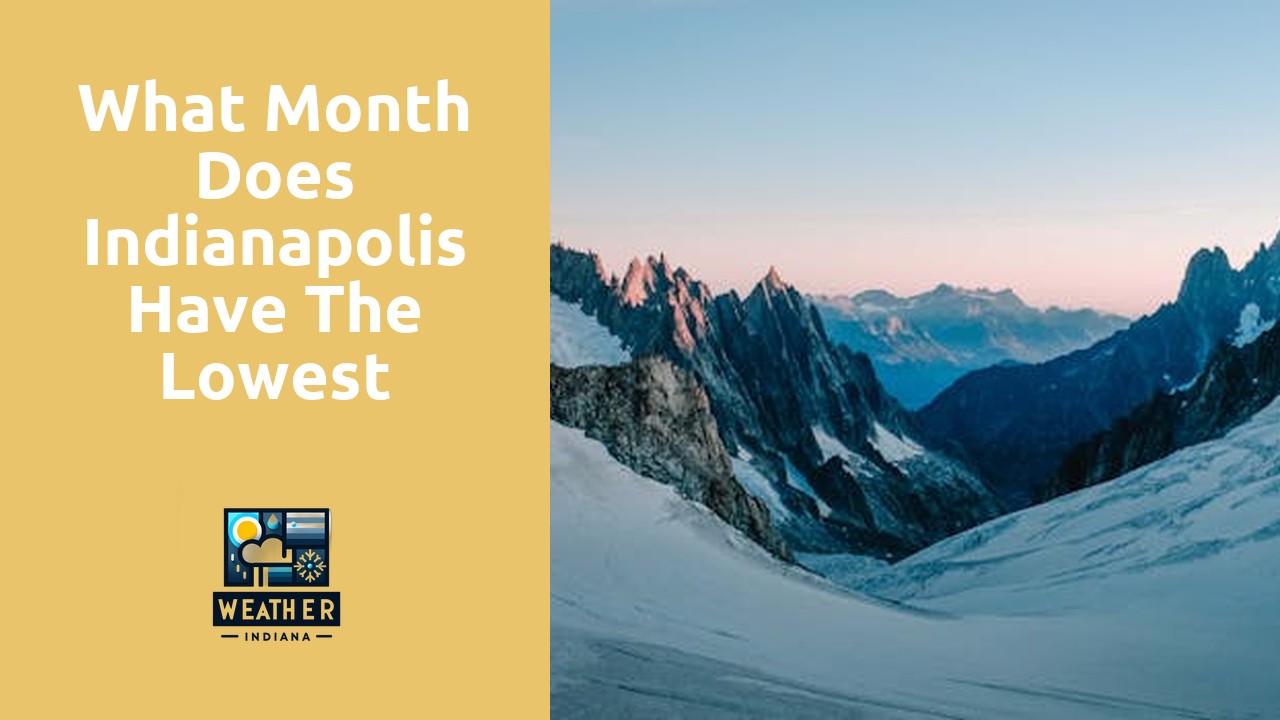Table Of Contents
Historical Temperature Trends in Indianapolis
Historical temperature trends in Indianapolis reveal a distinct pattern of seasonal variation. The city experiences warm summers with temperatures reaching their peak in July, often exceeding 80°F. In contrast, winters in Indianapolis are notably cold, with January typically recording the lowest average temperatures throughout the year.
Moreover, the transition months of spring and fall provide moderate temperatures, offering a pleasant climate for outdoor activities. Despite some fluctuations, historical data indicates that Indianapolis consistently sees its lowest average temperatures in January, making it the coldest month of the year for residents and visitors alike.
Record Low Temperatures in Indianapolis
Indianapolis experiences its lowest average temperatures typically in the month of January. This time of the year often brings frigid temperatures and frosty conditions to the city, with average lows hovering around the mid-teens Fahrenheit. These chilly temperatures can dip even lower on particularly cold nights, bringing the mercury down to single digits or even below zero.
Record low temperatures in Indianapolis have been documented during historical winters, showcasing the extreme cold that the city can endure. Some of the lowest temperatures ever recorded in Indianapolis have plummeted into the negative double digits, with wind chills exacerbating the icy conditions. These record-setting cold snaps serve as a reminder of the significant temperature variations that can occur in the city during the winter months.
Impact of Climate Change on Indianapolis Weather
Climate change is a pressing issue that is affecting weather patterns across the globe, including in Indianapolis. The city has been experiencing shifts in temperature and precipitation levels, leading to variations in seasonal weather norms. In recent years, there has been an observable increase in average temperatures during the winter months in Indianapolis, causing a significant impact on the local environment and residents.
As the effects of climate change continue to manifest in Indianapolis, there are concerns about the long-term implications for the region’s weather patterns. Warmer winters can disrupt ecosystems, alter agricultural practices, and even influence human health. The city is facing the challenge of adapting to these changing conditions while also working to mitigate further environmental degradation. Efforts to address climate change on a local level are increasingly important as Indianapolis grapples with the consequences of shifting weather dynamics.
Indianapolis’ Changing Temperature Patterns
Indianapolis has experienced noticeable shifts in its temperature patterns over the years. In recent decades, there has been a clear trend towards milder winters, with average temperatures gradually increasing. This change is reflected in the data, showing that the lowest average temperatures in the city are now occurring later in the year compared to previous decades.
The shift in temperature patterns in Indianapolis is not isolated and is in line with broader climate change trends observed globally. As greenhouse gas emissions continue to rise, the impact on the city’s weather becomes more apparent. The changing temperature patterns in Indianapolis highlight the need for proactive measures to mitigate the effects of climate change and adapt to the evolving weather conditions in the region.
Microclimates Within Indianapolis
Certain areas within Indianapolis exhibit distinct microclimates that can result in variations in temperature. Factors such as proximity to bodies of water, elevation differences, and urban heat island effects play a significant role in shaping these microclimates. For instance, neighborhoods closer to water bodies like Eagle Creek Reservoir may experience slightly cooler temperatures compared to more inland areas during the summer months due to the cooling influence of the water.
Additionally, urban areas characterized by a high density of buildings, roads, and concrete surfaces tend to absorb and retain heat, leading to warmer temperatures in what is known as the urban heat island effect. This phenomenon can result in higher temperatures in downtown Indianapolis compared to suburban or rural areas surrounding the city. Understanding these microclimates is essential for both residents and city planners to mitigate the impacts of temperature variations and ensure the well-being of the community.
Variations in Temperature Across Indianapolis Neighborhoods
Variations in temperature across different neighborhoods in Indianapolis can be quite significant, adding an extra layer of complexity to the city’s weather patterns. Factors such as proximity to bodies of water, urban heat island effect, and elevation differences all play a role in determining the local temperatures within each neighborhood. For instance, neighborhoods located near large bodies of water like Eagle Creek Reservoir or the White River may experience milder temperatures compared to neighborhoods further inland.
Moreover, urban areas with high concentrations of concrete and asphalt tend to retain more heat, resulting in higher temperatures during both day and night. As a result, neighborhoods in downtown Indianapolis or heavily industrialized areas may experience warmer temperatures than more suburban or green areas on the outskirts of the city. These temperature variations highlight the need for localized climate action plans that take into account the unique characteristics of each neighborhood to mitigate the impact of extreme temperatures.
FAQS
When is the coldest month in Indianapolis?
January is typically the coldest month in Indianapolis, with the lowest average temperatures.
What is the average temperature in Indianapolis during the coldest month?
The average temperature in January in Indianapolis is usually the lowest compared to other months, with temperatures often dropping below freezing.
Are there any record low temperatures recorded in Indianapolis?
Yes, Indianapolis has experienced record low temperatures in the past, with some extreme cold spells causing temperatures to plummet well below zero degrees Fahrenheit.
How does climate change impact the winter temperatures in Indianapolis?
Climate change can lead to fluctuations in winter temperatures in Indianapolis, potentially causing milder or more severe winters depending on various factors.
Are there any specific neighborhoods in Indianapolis known for colder temperatures?
Certain neighborhoods in Indianapolis may have microclimates that experience slightly colder temperatures compared to others, influenced by factors such as elevation and proximity to bodies of water.

